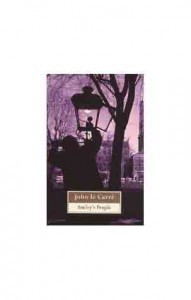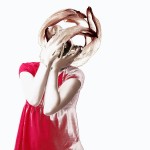A vase of tulips on the kitchen table to cheer me up. Tulips are the…
Find a legend for a girl
 Just a short post to talk about Christine Bruckmeier. She presented work at Expodium in Utrecht on sept 25th. Expodium has a series of workshops that are part of a research project titled: ‘Malleability Revisited: Beyond the Interstitual Experience’ . The program focusses on ‘Terains Vagues”.
Just a short post to talk about Christine Bruckmeier. She presented work at Expodium in Utrecht on sept 25th. Expodium has a series of workshops that are part of a research project titled: ‘Malleability Revisited: Beyond the Interstitual Experience’ . The program focusses on ‘Terains Vagues”.
Christine is a former MaHKU student and presently researches ‘niemandsland’ – no mans land. Of interest to me is the way she gives her artworks a ‘legend‘: she does not explain about her work but tells us a story about it that may or may not be true. For example: the deserted house she filmed- is this really the house where her grandfather committed suicide and that her grandmother left empty ever since? She gives us the story and declines to answer when asked ‘if this has really happened’.
I think this is a very interesting way to go about it.
Quote from Christine’s hand-out:
Michael Ende: Das Haus an der Peripherie: In the form of a letter the autohor describes a house in a suburbian niemandsland in the north of munich, in 1940 -1945. What looks like a normal family house appears to be the entrance to another world, to nothing, to darkness. The house is completely identical on each side. When you try te enter it on the one side you leave it on the opposite side in the very same moment. At the end of World War II a few nazi officials enter the house and it disappears foor good. The author, investigating the story, checks with the maps at the city council and realizes that not only the house has disappeared but that the space in that area has shrinked according to the ground measurements of the house.
An autobiographical crime story: I grew up in the north of munich – the forgotten part of the city, unstructured, unplanned: niemandsland. Actually it is BMW-land. MAN-land. And there is a reason why the companies chose, in the 1930’s, to build factories there. It is just 20 minutes to dachau. It is not mentioned very often, but they simply profited from the cheap labor from the concentration camp. Between dachou and the industrial area, where I grew up, you got a quiet diverse neighbourhood with a lot of terrain vague in between. There is a lot of social housing, for people who were imprisoned in dachau – strangely enoug they stayed so close to the setting of their tortures – russians, jewish, sinti and roma. There is also a neighbourhood that was built for the families of the SS members working in the camp – I went to school with quite a few children who’s loving grandfathers used to do that job. And there is the neighbourhood of polish and russian germans who were expelled after 1045 – die Vertriebenen. They rebuilt their eastern village in the north of munich following exactly the same structure of the original village. Neighbour stayed neighbour. As a teenager I hated this greyish, undefined area. In my early twenties, when the city council decided to restructure the area and many of the old houses were torn down, I decided to document it and only then, at the point of time it disappeared, I realized that I like it. With the photographs niemandsland became a setting – it became beautiful.
I took the word ‘legend’ from le Carre’s ‘Smileys People”, a beautiful book set in the time of the Cold War. Mr. Smiley is a member of the british counter-espionage establishment working against the Russians. His task is to counteract the influence of his russian alter ego Karla on his own organisation. He discovers that Karla is’ looking for a legend for a girl’ – wanting to smuggle his daughter out of the country Karla mis-uses his position and his countries resources to make up a fake history for the girl, so that she can be admitted into a Swiss asylum for treatment. One of his assistants, Kirov, is sent out to make this legend. Quote (page 180):”Smiley poured two fingers of whiskey and watched her sip. ‘What did Kirov want Otto to do with the émigrés?’ he said. ‘Kirov wanted a legend’, she replied. ‘He wanted a legend for a girl’.
Must find a few legends for my own work
.
| « Presentational knowledge and Karl Popper | <-- previous post | next post --> | Definition of mental map » |
|---|







